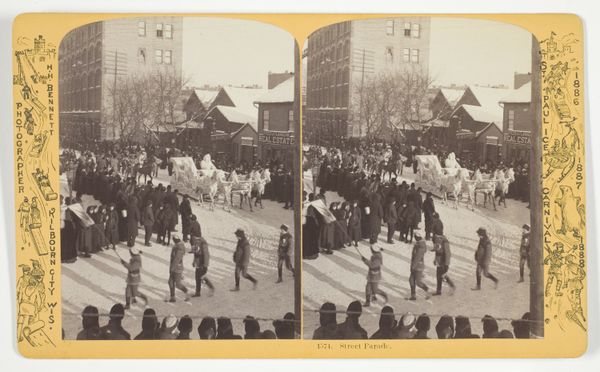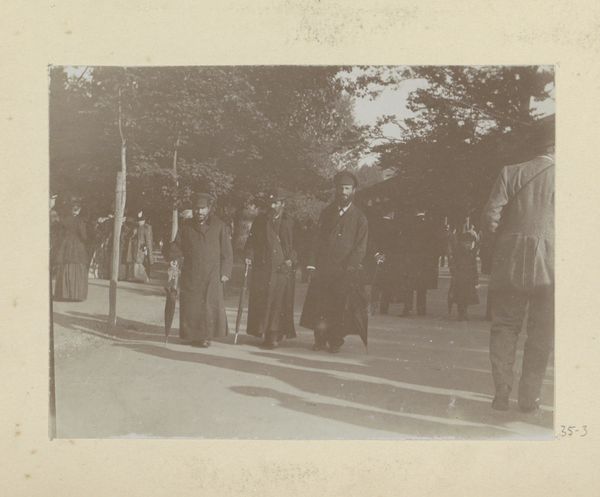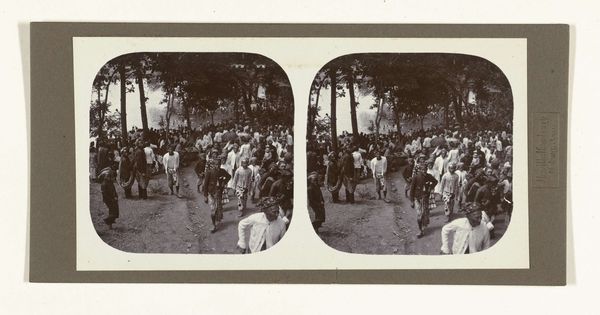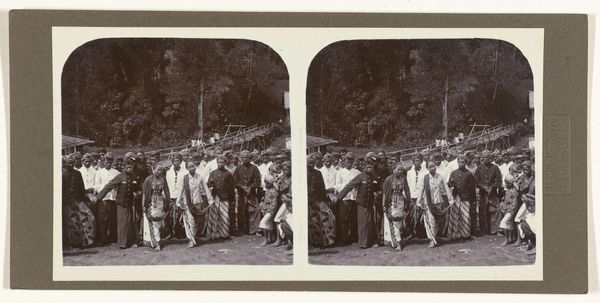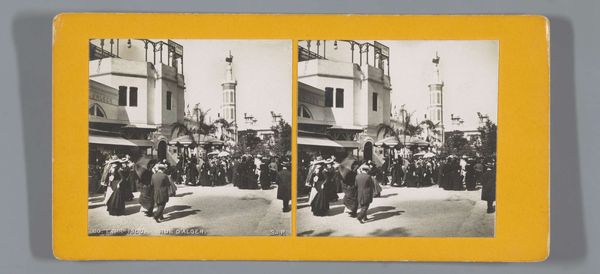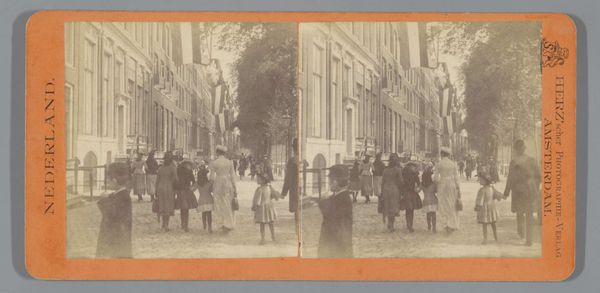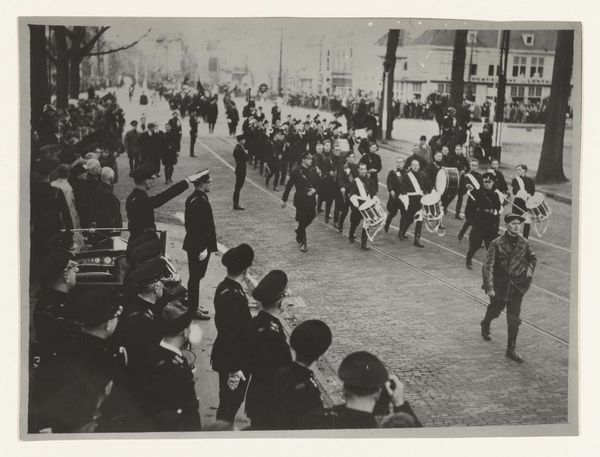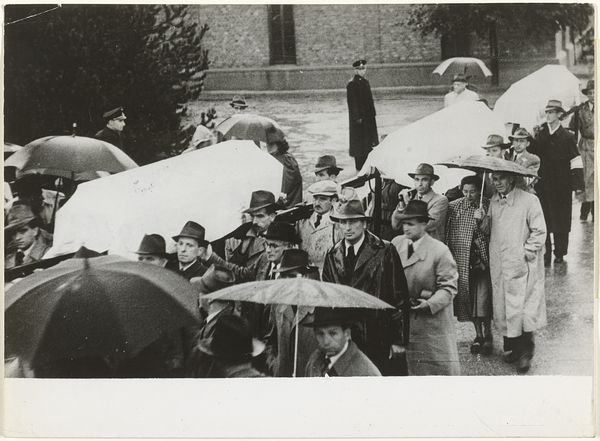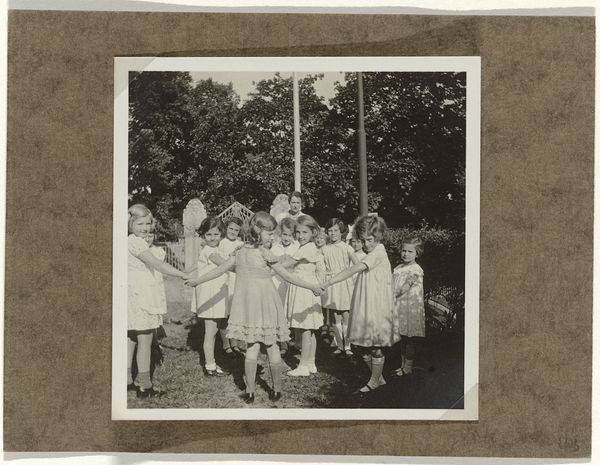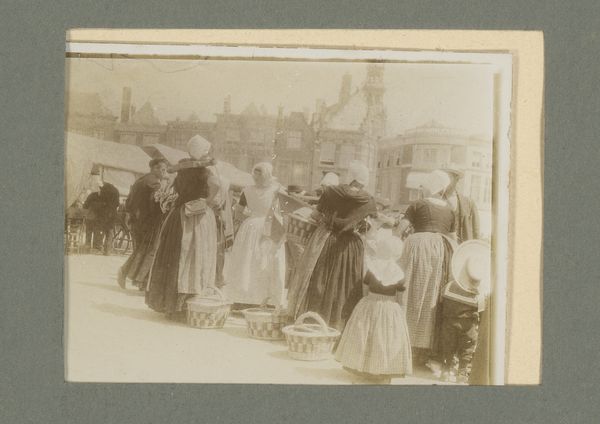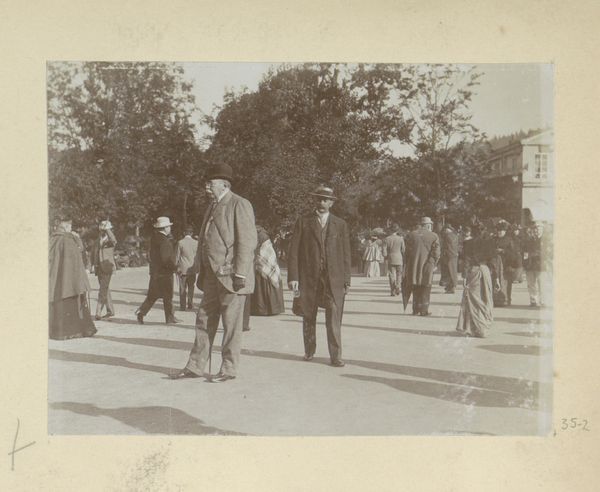
gelatin-silver-print, print, photography, gelatin-silver-print
#
gelatin-silver-print
# print
#
photography
#
gelatin-silver-print
#
cityscape
Dimensions: height 87 mm, width 177 mm
Copyright: Rijks Museum: Open Domain
Curator: This gelatin-silver print, titled "Cours la Reine tijdens de Wereldtentoonstelling van 1900", captures a moment in Paris during the World's Fair. Editor: It’s bustling! So many people, sharply dressed. It feels a little grainy, maybe even intentionally soft, giving it that dreamy, impressionistic haze. Curator: Indeed. It’s a fine example of pictorialism, aiming for artistic effect through darkroom manipulation and printing techniques. Notice how photography at the time was heavily influenced by movements in painting, seeking to be seen as more than mere documentation. The rise of industry and mechanical reproduction deeply influenced such aspirations. Editor: Right. So photography sought higher cultural status in places like galleries. Looking at how crowded the frame is, though, I wonder about the social aspect of these fairs. Who had access? Who was included in this visual narrative of progress and modernity? Were all equally captured through the gelatin-silver print medium of that period? Curator: Absolutely. Consider the Exposition Universelle as a display of French power and colonialism. While showcasing technological advances, it also presented a very controlled vision of society, largely through the types of images disseminated. I'd be curious how workers processing photographic material were treated or what their lived reality consisted of outside this idealized vision of photographic representation and society. Editor: That makes me rethink the "dreamy" quality I mentioned before. Perhaps it wasn’t just aesthetic. It's interesting how the print emphasizes specific activities related to modernity, commerce, and leisure in a public urban space—all heavily reliant on specific industrial means of production and the exploitation of human labor and available material. It brings a whole new dimension to seeing this seemingly simple scene. Curator: Exactly, considering those structures highlights how these photographs not only recorded an event but were actively shaping perceptions and ideologies of its time, reinforcing class structures through very carefully made images. Editor: It does make you realize there is more to it, and I’ll be looking at it and many more images from the same period with an entirely different, newly found appreciation. Curator: Precisely, the politics of imagery are just as important as image-making.
Comments
No comments
Be the first to comment and join the conversation on the ultimate creative platform.
